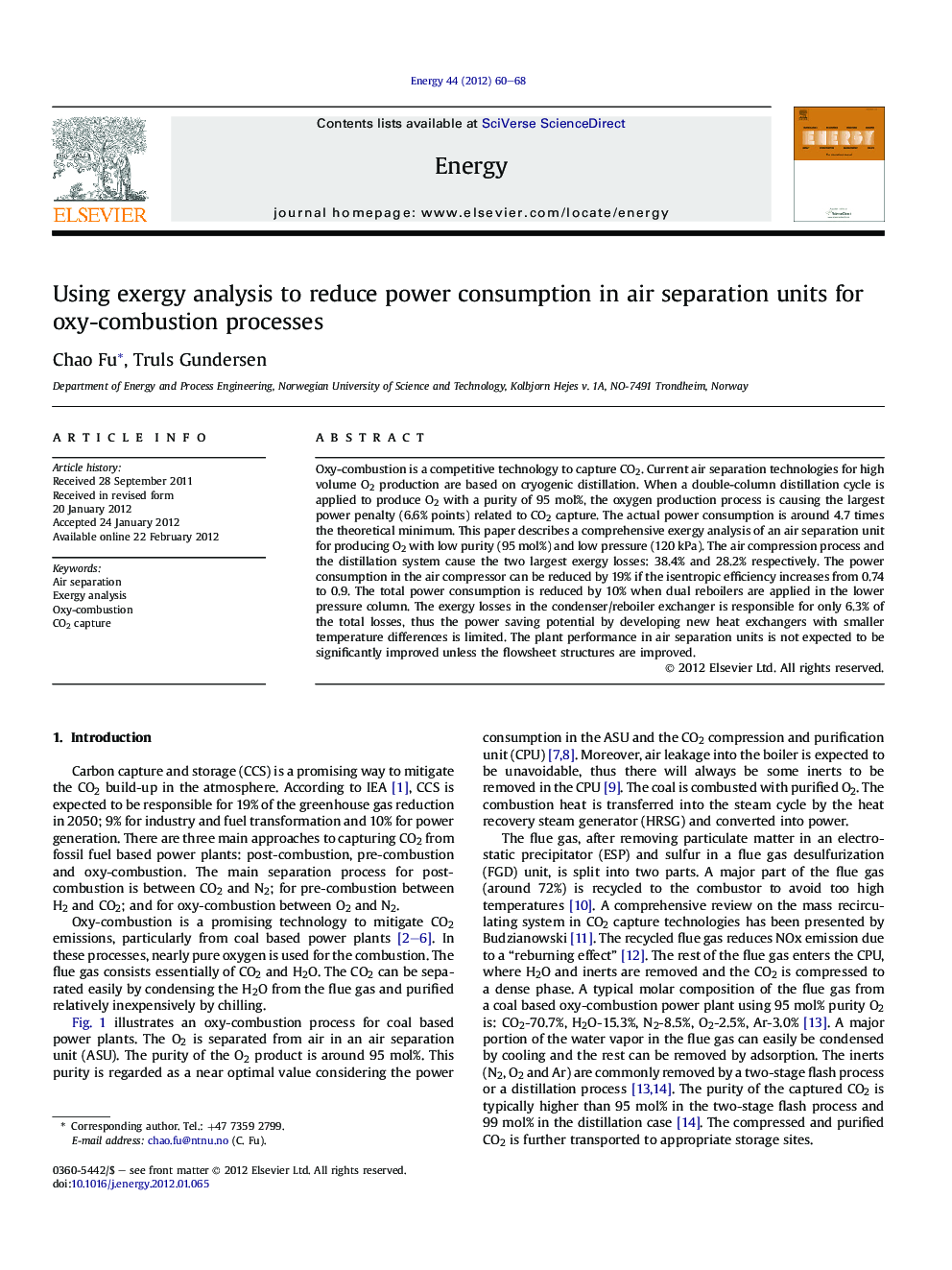| کد مقاله | کد نشریه | سال انتشار | مقاله انگلیسی | نسخه تمام متن |
|---|---|---|---|---|
| 1733543 | 1016143 | 2012 | 9 صفحه PDF | دانلود رایگان |

Oxy-combustion is a competitive technology to capture CO2. Current air separation technologies for high volume O2 production are based on cryogenic distillation. When a double-column distillation cycle is applied to produce O2 with a purity of 95 mol%, the oxygen production process is causing the largest power penalty (6.6% points) related to CO2 capture. The actual power consumption is around 4.7 times the theoretical minimum. This paper describes a comprehensive exergy analysis of an air separation unit for producing O2 with low purity (95 mol%) and low pressure (120 kPa). The air compression process and the distillation system cause the two largest exergy losses: 38.4% and 28.2% respectively. The power consumption in the air compressor can be reduced by 19% if the isentropic efficiency increases from 0.74 to 0.9. The total power consumption is reduced by 10% when dual reboilers are applied in the lower pressure column. The exergy losses in the condenser/reboiler exchanger is responsible for only 6.3% of the total losses, thus the power saving potential by developing new heat exchangers with smaller temperature differences is limited. The plant performance in air separation units is not expected to be significantly improved unless the flowsheet structures are improved.
► We simulate a conventional double-column air distillation process.
► The exergy losses in the entire process are quantified.
► Various ways to reduce the irreversibilities are presented.
► The power consumption can be reduced by 10% by placing an intermediate reboiler in the lower pressure column.
Journal: Energy - Volume 44, Issue 1, August 2012, Pages 60–68